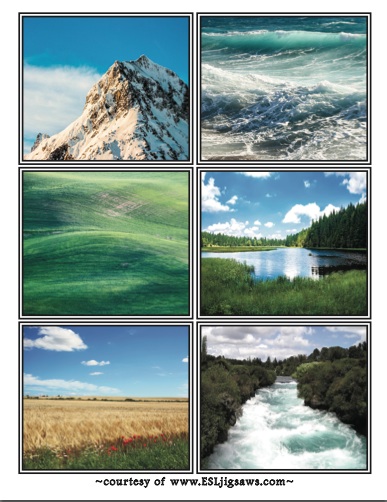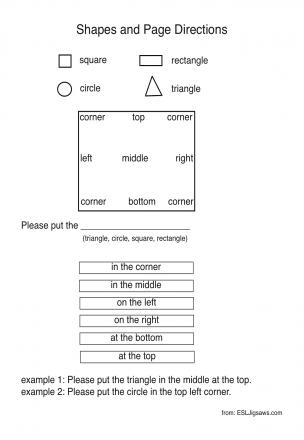When studying about Canada (or America, Australia, etc.) with a beginner class, students need to know some basic geography words. Here are nine essential simple geography words:
- mountain
- hills
- prairie
- ocean
- lake
- river
- island
- valley
- forest
Download this set of matching cards below for your students to practice this geography vocabulary by clicking any of the images below. Each photograph featured is in the public domain under a CC0 licence so can be copied.
Scroll below for a fun speaking game to practice the vocabulary.



Geography Vocabulary Speaking Game
This speaking game has always been a hit with my students.
Show students the geography image cards and ask them, “Which one of these is most like you?” Are you a mountain? A river? A prairie?
Explain (using vocabulary suitable for your class’ level) that a person who identifies with a mountain is very dramatic and extroverted. He or she is known by everyone and has a voice that projects well. My experience is that after this first explanation, students understand and anticipate easily which human characteristics are identified with each geographical feature and you can usually elicit the characteristics with a bit of prompting.
Here are my associations: The person who identifies with the ocean has dramatic emotional variability but may not be the centre of attention the way the mountain is. The person who identifies with a hill has some ups and downs, but is less dramatic than the mountain and ocean. The person who identifies with the prairie is very open and sunny with no real mood swings. The person who identifies with a lake tends to be calm and maybe romantic. The person who identifies with a river never stops moving. The person who identifies with an island tends to be a loner. The person who identifies with the valley tends to be depressed. The person who identifies with the forest is an introvert who is not easily understood.
First ask students to write down which geographical feature they identify with and to think about why. Ask the class to guess each student’s choice before students share their own choice and explain their reasons. This game makes for a fun discussion and getting to know you exercise.
Quite surprisingly, each year, my classes have identified the same geographical feature for me—one I actually had not thought of for myself—calling out, “You’re a river!”
This vocabulary game is useful for Callan’s Beginner Canada Jigsaws and Callan’s New Canada Jigsaws:








